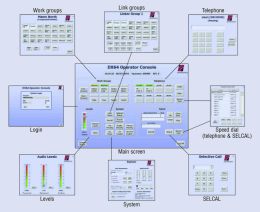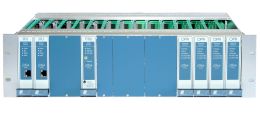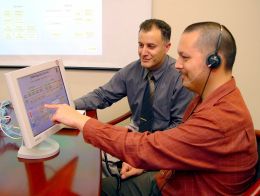|
The DX-64 adds to our product line a flexible and expandable platform that will complement our 950 and 990 series of Radio Management Systems. With a fully digital backbone and computer driven user interface this product can offer the features required in demanding installations. Reliability was also a prime consideration in the design of the DX-64. Minimal interconnection between system components, main/standby redundancy for the System Control Unit and hot swapping of interface cards ensures maximum reliability and continuos operation during maintenance. Perhaps the most appealing factor of the DX-64 is its price. Considering the available features, expansion capacity and quality, the DX-64 offers outstanding value for money. | ||
|
Modular design ensures that the capacity of the DX-64 is totally flexible and allows the system to grow with the user. The system is capable of handling up to 32 operator positions each of which can control, monitor, group and link a maximum of 56 radio, audio or telephone channels. With systems starting with 2 operators controlling 8 radio channels (see diagram) integrators are able to offer cost effective solutions knowing that future expansion is ensured. |
 |
|
|
DX-64
SCU - System Control Unit Four digital busses are connected to each SCU providing a total of 56 bi-directional audio channels to the line and 56 bi-directional audio channels to the DX-64 OPR Operator Interface cards. The digital busses are capable of handling 64 channels however 8 of these channels are dedicated to high speed audio switching information. The SCU collects channel control and configuration information from the operators via a TCP/IP 10Base-T LAN. This control information is then distributed throughout the components of the DX-64 by a high speed RS485 bus. This bus is also used to collect diagnostic information which is made available to operators via the LAN. |
 |
|
|
DX-64
OPR - Operator Interface Card |
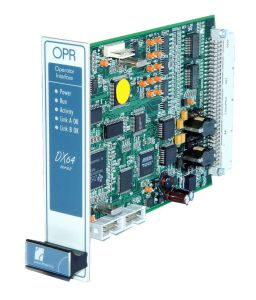 |
|
| DX-64
TMU - Tape Monitor Unit Any of the 56 channels can be selected for monitoring. The TMI card has an output capacity of eight channels, each of which is a 600ohm, transformer coupled, analog output. The TMI also presents a control output for each individual channel whenever a PTT or Mute is detected on that configured channel. Up to 7 TMI cards can be installed so that a fully loaded 56 channel system can be monitored. |
 |
|
| DX-64
AFI - Audio Facilities Interface The AFI is the operators' analog interface to the digital system. Various audio devices such as headsets, desk & gooseneck microphones or handsets are managed by the AFI. Transmit audio is digitised and forwarded to the OPR for connection to the channels selected by the operator. A number of PTT functions are catered for. Received audio can be arranged into either foreground or background mode allowing the operator to differentiate several sources. Local PABX or PSTN telephone handsets can also be managed by the AFI to provide a convenient single source for all audio control. The AFI also provides an interface to the system's inbuilt Rapid Recall logger. |
||
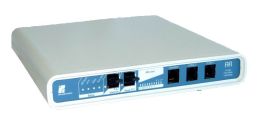 |
||
| DX-64
PC/TS - Operator Touch Screen Control Using a standard IBM compatible PC with a Touch Screen, the operator is able to gain access to all audio channels connected to the system. A friendly Graphical User Interface GUI, has been developed to give the operator full control of audio selection, grouping, selcal and many other system functions. The PC communicates to the SCU via a standard TCP/IP LAN. It should be noted that if the LAN or the PC fails, operation via the AFI will continue uninterrupted. BISS Technologies recognise many clients will request customisation of the GUI and this requirement can be met. A separate Configuration and Maintenance utility is available for System Administrators. This utility allows the administrator to configure operating parameters for the LAN and the DX-64 hardware. |
||
| DX-64
LIU - Line Interface Unit The LIU provides an eight-way radio or audio 4 Wire E & M interface to the DX-64. Each channel incorporates selcal, DTMF, CTCSS and In-band signalling which are fully controllable at the operator positions. All level controls within the LIU can be setup locally by front panel control or remotely by the System Administrator. Entertainment channels can also be interfaced into the LIU. Multiple LIUs can be paralleled onto the digital bus to fully utilise the 56 channel capacity of the DX-64.
DX-64
RF - Rack Frame |
|
|
| BISS Technologies Home | ||


